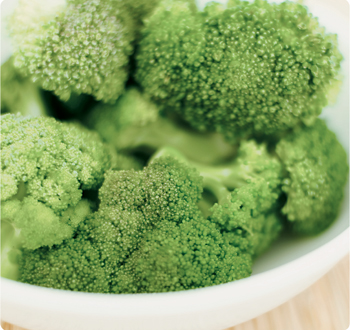43 Go Beyond Dairy for Bone-Building Calcium and Vitamin D
Although dairy products offer significant amounts of calcium and are frequently fortified with vitamin D, your bones may be better off if you get a good portion of these nutrients from nondairy sources. A 2009 review of studies in the American Journal of Clinical Nutrition noted that countries with the highest rates of dairy consumption also boast the highest rates of fracture from osteoporosis. That’s not to say you need to shun cow’s milk products entirely, since they are such a good source of calcium and, when fortified, vitamin D. But there’s good evidence that filling your plate with a wide range of nondairy sources gives you the best bone benefit (good news for people who are lactose intolerant or who avoid dairy for other reasons).
Sup on Surprising Sources of Calcium to Keep Your Bones Strong
A 2005 study in the journal Sports Medicine found that after menopause, exercise’s ability to boost bone mineral density ( 38, 39) largely depends on adequate availability of dietary calcium. Adults up to age fifty need 1,000 milligrams of calcium per day, and those older than fifty should aim for 1,200 milligrams per day. Vegetables, fish, and fortified foods offer nondairy alternatives to help you reach the recommended amounts.
38, 39) largely depends on adequate availability of dietary calcium. Adults up to age fifty need 1,000 milligrams of calcium per day, and those older than fifty should aim for 1,200 milligrams per day. Vegetables, fish, and fortified foods offer nondairy alternatives to help you reach the recommended amounts.
Many vegetables contain calcium, but some have other compounds (such as oxalic acid) that inhibit calcium absorption. So while a half cup of cooked spinach serves up 115 milligrams of calcium, you’d need to eat sixteen servings to equal the amount of absorbable calcium you’d get in an 8-ounce glass of milk. Vegetables in the kale family (such as broccoli, bok choy, cabbage, and mustard and turnip greens) offer calcium that is as well absorbed as that in dairy products. One cup of cooked broccoli provides nearly 70 milligrams. Other good nondairy sources of calcium include dried figs, white beans, almonds, and edamame (fresh soybeans). Studies are mixed, but soy seems to increase bone density and prevent fractures after menopause, when the most dramatic bone loss occurs.
Canned sardines and salmon, with their tiny edible bones, also supply calcium. In fact, a 3-ounce serving of sardines contains more calcium (324 milligrams) than an 8-ounce glass of nonfat milk (302 milligrams)! Fortified orange juice, soy foods, and breakfast cereals also contain good amounts, and some may offer bone-building vitamin D as well.
Dine on Vitamin D–Rich Foods to Delay Bone Breakdown
Vitamin D is critical for calcium absorption (and science is beginning to discover its importance in other body systems as well). If you don’t get enough, your body secretes too much parathyroid hormone, which speeds up bone breakdown. In fact, some studies show that increasing calcium intake alone is not sufficient to protect you from fractures as you get older: Vitamin D makes the difference. However, recent evidence indicates that a surprising number of people are deficient. Although your body can make vitamin D3 (cholecalciferol) from the UVB rays in direct sunlight, it’s an unreliable source, and even some people who live in sun-soaked climates still don’t make enough (not to mention rising concern about skin cancer risk). Plus, as you get older, your body is less efficient at producing vitamin D from the sun.

Few foods contain vitamin D, but salmon, mackerel, tuna, sardines, egg yolks, and fortified cereals are good sources. U.S. dietary recommendations are 400 IU of vitamin D per day in adults age fifty to seventy, and 600 IU per day in those over age seventy. In a 2008 study, Swiss researchers even suggested that all postmenopausal women and everyone over the age of sixty get 800 IU of vitamin D because it plays such a crucial role for bones and other aspects of health; other experts recommend that people who get very little sun exposure take as much as 1,000 IU per day. (Vitamin D is safe up to 2,000 IU, according to the Institute of Medicine.) To get that much, you’ll almost certainly need to supplement in addition to eating these foods. Your multivitamin might contain some, and many calcium supplements now come with vitamin D as well. Look for D3 (cholecalciferol) on labels, since your body absorbs it better.
 38, 39) largely depends on adequate availability of dietary calcium. Adults up to age fifty need 1,000 milligrams of calcium per day, and those older than fifty should aim for 1,200 milligrams per day. Vegetables, fish, and fortified foods offer nondairy alternatives to help you reach the recommended amounts.
38, 39) largely depends on adequate availability of dietary calcium. Adults up to age fifty need 1,000 milligrams of calcium per day, and those older than fifty should aim for 1,200 milligrams per day. Vegetables, fish, and fortified foods offer nondairy alternatives to help you reach the recommended amounts.